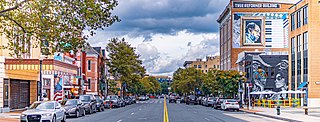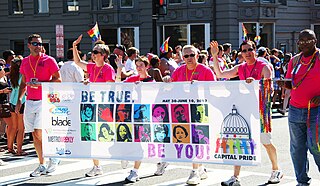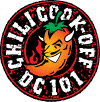
Washington, D.C., has been home to many prominent musicians and is particularly known for the musical genres of Jazz, Rhythm & Blues, bluegrass, punk rock and its locally-developed descendants hardcore and emo, and a local funk genre called go-go. The first major musical figure from District of Columbia was John Philip Sousa, a military brass band composer. Later figures include jazz musicians, such as Duke Ellington, Charlie Rouse, Buck Hill, Ron Holloway, Davey Yarborough, Michael A. Thomas, Butch Warren, and DeAndrey Howard; soul musicians, including Billy Stewart, The Unifics, The Moments, Ray, Goodman & Brown, Van McCoy, The Presidents, The Choice Four, Vernon Burch, guitarist Charles Pitts, and Sir Joe Quarterman & Free Soul.

The culture of San Francisco is major and diverse in terms of arts, music, cuisine, festivals, museums, and architecture but also is influenced heavily by Mexican culture due to its large Hispanic population, and its history as part of Spanish America and Mexico. San Francisco's diversity of cultures along with its eccentricities are so great that they have greatly influenced the country and the world at large over the years. In 2012, Bloomberg Businessweek voted San Francisco as America's Best City.

The U Street Corridor or Greater U Street, sometimes known as Cardozo/Shaw, is a neighborhood in Washington, D.C., located in Northwest D.C. Centered along U Street, the neighborhood is one of Washington's most popular nightlife and entertainment districts, as well as one of the most significant African American heritage districts in the country.
The culture of Ann Arbor, Michigan includes various attractions and events, many of which are connected with the University of Michigan.
The culture of Boston, Massachusetts, shares many roots with greater New England, including a dialect of the Eastern New England accent popularly known as Boston English. The city has its own unique slang, which has existed for many years. Boston was, and is still, a major destination of Irish immigrants. Irish Americans are a major influence on Boston's politics and religious institutions and consequently on the rest of Massachusetts.
The culture of Detroit, Michigan, has influenced American and global culture through its commercial enterprises and various forms of popular music throughout the 20th and 21st century. Its automotive heritage plays an important role in the city's culture.

Capital Pride is an annual LGBT pride festival held in early June each year in Washington, D.C. It was founded as Gay Pride Day, a one-day block party and street festival, in 1975. In 1980 the P Street Festival Committee formed to take over planning. It changed its name to Gay and Lesbian Pride Day in 1981. In 1991, the event moved to the week prior to Father's Day. Financial difficulties led a new organization, One In Ten, to take over planning of the festival. Whitman-Walker Clinic (WWC) joined One In Ten as co-sponsor of the event in 1997, at which time the event's name was changed to Capital Pride. Whitman-Walker became the sole sponsor in 2000. But the healthcare organization came under significant financial pressures, and in 2008 turned over producing duties to a new organization, Capital Pride Alliance.

Lark Street is a historic street in Albany, New York, US. It is part of the Arbor Hill, Sheridan Hollow, Center Square, Park South and Hudson/Park neighborhoods, and is located one block east of Washington Park. Lark Street is the site of many independently owned shops, coffee houses, restaurants, art galleries, antique shops, marketing agencies, bars and tattoo shops. Although the part between Madison Avenue and Washington Avenue was rebuilt in 2002-2003 to place new roadways, trees and sidewalks in front of the new shops in the active portion of Lark Street, some local residents have protested against the neglect of the northern end of the street, which runs down into the less-affluent Arbor Hill neighborhood. Lark Street and Jay Street was used as a location during the filming of Ironweed. The Washington Avenue Armory is located at the corner of Lark Street and Washington Avenue.

Street Sense is a weekly street newspaper sold by self-employed homeless distributors ("vendors") on the streets of Washington, D.C., the capital city of the United States. It is published by the 501(c)(3) nonprofit Street Sense Media, which also produces documentary filmmaking, photography, theatre, illustration and poetry. The organization says this media, most of which is created by homeless and formerly homeless people, is designed to break down stereotypes and educate the community.

Lincoln Theatre is a historic theater in Washington, D.C., located at 1215 U Street, next to Ben's Chili Bowl. The theater, located on "Washington's Black Broadway", served the city's African American community when segregation kept them out of other venues. The Lincoln Theatre included a movie house and ballroom, and hosted jazz and big band performers such as Duke Ellington. The theater closed after the 1968 race-related riots. It was restored and reopened in 1994, and hosts a variety of performances and events. The U Street Metro station, which opened in 1991, is located across the street from the Lincoln Theatre.

The culture of Washington, D.C. is reflected in its status as the capital of the United States and the presence of the federal government, its large Black population, and its role as the largest city in the Chesapeake Bay region. The presence of the U.S. federal government, in particular, has been instrumental in developing numerous cultural institutions throughout the city, such as museums and performing arts centers. The city's historic Black population has also helped drive cultural activities and artistic pursuits. During the early 20th century, for example, Washington's U Street Corridor became an important center for African American culture.
Applefest is a yearly village-wide food, entertainment and crafts fair, taking place in several towns in Canada, the United States and England.

The culture of San Antonio reflects the history and culture of one of the state's oldest and largest cities straddling the regional and cultural divide between South and Central Texas. Historically, San Antonio culture comes from a blend of Central Texas and South Texas (Southwestern) culture. Founded as a Spanish outpost and the first civil settlement in Texas, San Antonio is heavily influenced by Mexican American culture due to Texas formerly being part of Mexico and, previously, the Spanish Empire. The city also has significant German, Anglo, and African American cultural influences. San Antonio offers a host of cultural institutions, events, restaurants and nightlife in South Texas for both residents and visitors alike.

The DC101 Chili Cook-Off is an annual rock concert sponsored by Washington, D.C. / Baltimore, Maryland radio station WWDC (FM). Proceeds from the concert, traditionally held in Washington, D.C. in mid-to-late May, are donated to the National Capital Area chapter of the National Kidney Foundation. The name originates from the chili competition that used to occur during the event. Unlike what the name implies, some recent events did not actually offer any chili, though in 2013 chili was offered in three different booths.
Lummis Day is a signature community arts and music event in the neighborhoods of Northeast Los Angeles, showcasing the community's considerable pool of musicians, poets, artists, dancers and restaurants representing a kaleidoscope of ethnicities and cultural traditions. Since 2014, Occidental College's Institute for the Study of Los Angeles has partnered with the Lummis Day Community Foundation to support cultural programming.

BloomBars is a not-for-profit community arts organization based in the Columbia Heights neighborhood of Washington, D.C. Launched in June 2008 out of a former print shop at 3222 11th Street NW by John Chambers, the space currently hosts dance and wellness classes, film screenings, an open mic night, art exhibitions/performances and facilitates an artist residency program.

Atlanta's mild climate and plentiful trees allow for festivals and events to take place in the city year-round. One of the city's most popular events is the Atlanta Dogwood Festival, an arts and crafts festival held in Piedmont Park each spring, when the native dogwoods are in bloom. Atlanta Streets Alive, inspired by the ciclovía in Bogotá, Colombia, closes city streets to car traffic to allow people to participate in health and community-oriented, such as bicycling, strolling, skating, people-watching, tango, yoga, hula hooping, and break dancing.
Summer Meltdown is an annual camping and music festival in the Pacific Northwest region of the United States. It was originally based in Darrington, Washington, and relocated to Monroe, Washington, in 2022. The festival is held each August and features over 50 bands on four stages over four days, the Green Village showcasing environmental and social outreach, food, craft and retail vendors, a Kids' Area, Kids' Parade, and the Little Seahorse Music Academy.

Square Roots is a two- to three-day music festival that has been held each summer in the Lincoln Square neighborhood in Chicago since 1998. Organized by the Old Town School of Folk Music and the Lincoln Square Chamber of Commerce, the festival features world music and dance performances from a variety of genres, with particular emphasis on folk and world music.

People of Irish descent form a distinct ethnic group in Washington, D.C., and have had a presence in the region since the pre-American Revolution period.














